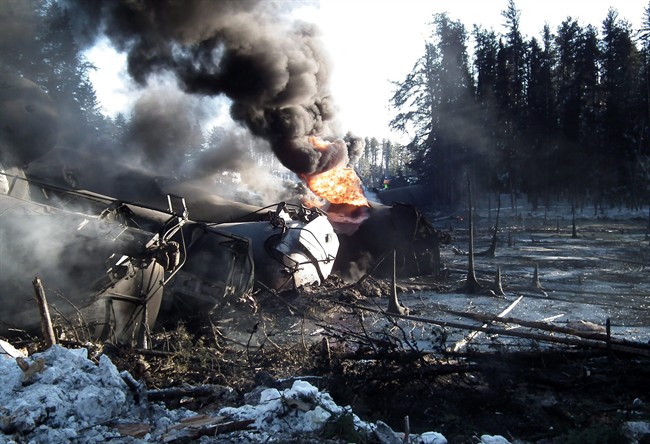OTTAWA – Continued weaknesses in safety oversight at Transport Canada means there’s no real telling just how safe or dangerous it is to travel the country by road, rail, air or sea, a recent audit of the department found.

“We’ve seen the devastating effects of a lack of safety oversight in this country,” said NDP deputy transport critic Matthew Kellway. “And we continue to see it, especially in rail safety, but also in road and vehicle safety.”
This report is just the latest in a growing number to highlight the department’s troubles with safety oversight.
The Transport Canada-commissioned audit, recently posted online, outlines several problems at the department responsible for safety while travelling by road, rail, air and sea.
READ MORE: Transport Canada’s safety inspectors lack oversight, evaluation: audit
In the broad strokes, the auditors found Transport Canada lacks a standard system across the board for creating rules, overseeing activities to ensure compliance with those rules, and managing non-compliance.
That failing is long-standing at the department and well-documented in audits and disasters.
The federal Transportation Safety Board last year determined Transport Canada’s failure to enforce its own safety regulations played a significant role in the July 2013 Lac Megantic disaster that killed 47 people, obliterated the downtown core and contaminated waterways.
In this most recent report, auditors said lax oversight “impedes the department’s ability to monitor and report” whether its safety systems are even effective.
- Honda expected to announce Ontario EV battery plant, part of a $15B investment
- Trudeau says ‘good luck’ to Saskatchewan premier in carbon price spat
- Canadians more likely to eat food past best-before date. What are the risks?
- Hundreds mourn 16-year-old Halifax homicide victim: ‘The youth are feeling it’
The audit notes, however, the department has launched a program called Safety and Security Transformation 2020 which it expects will “address the majority of the gaps” highlighted in the report.
READ MORE: Auditor general finds ‘significant weaknesses’ in Transport Canada’s oversight of rail safety
“As the audit clearly says, Transport Canada is in the process of taking action, including developing a comprehensive, overarching plan to manage and report on the issues identified,” a spokesman for Transport Minister Lisa Raitt wrote in an email to Global News. He added the minister’s office expects the department to fulfil all of the auditors’ recommendations.
But Kellway said he can’t understand why the government needs another half-decade before the problem is addressed.
Liberal Transport critic David McGuinty was similarly perplexed.
READ MORE: What Canadians need to know about the widespread Takata airbag recall
“Have they learned nothing?” McGuinty said. “There have been repeated warnings, and now an internal warning which basically substantiates what the auditor general pointed out some two years ago. This just basically tells us they’re not minding the affairs here.”
Specifically, the audit noted occasional difficulties finding appropriate inspectors, who typically come from industry. The barriers are usually age gaps and age, the auditors wrote; the transition from industry to the department usually happens in the later part of someone’s career, setting them up for a relatively short run as inspectors.
“In order to minimize the challenges in recruiting and retaining inspectors, competencies should be reviewed, and alternative approaches should be explored,” the auditors wrote.
READ MORE: Not enough done to make railways safe for crude oil transport, reports find
The auditors also found a tendency among inspectors to prioritize the quantity of inspections – reaching regional quotas – rather than focusing on quality or relevance.
The report also highlighted the fact Transport Canada consistently under spends it budget, something the NDP’s Kellway said is grossly misleading.
“If you’re telling Canadians that you’re going to spend these dollars to ensure they’re safe when they travel by road, air, on the water, or that they’re safe when they live by train tracks, then you spend that money and you live up to the promise and you make sure they’re safe,” he said.
READ MORE: Funding slashed for all safety programs at Transport Canada
Given the federal auditor general and at least one previous internal audit has raised red flags in terms of safety oversight, Liberal critic McGuinty said he simply cannot understand what’s taking so long.
“By now an audit should come out with flying colours, saying they’ve implemented a quality management system in line with priorities,” he said.
“But we don’t see that. We just see report after report saying it’s not up to speed. I’m not sure what they’re waiting for. God forbid they’re waiting for another Lac Megantic to happen in a major urban setting in Canada.



Comments